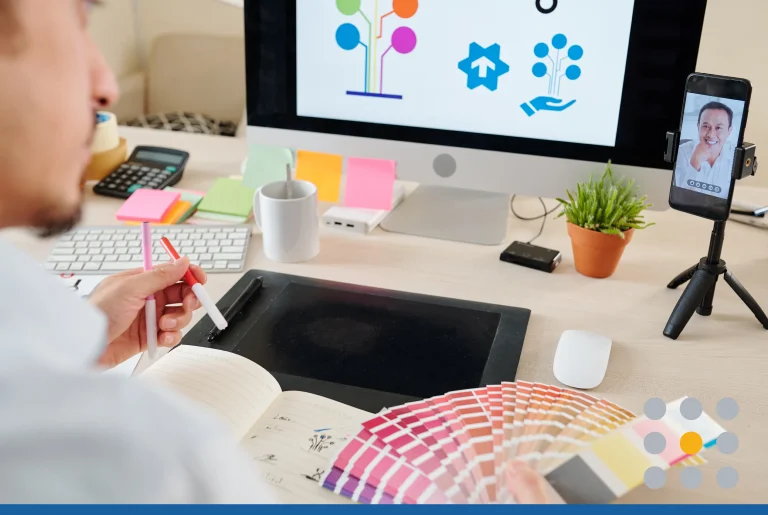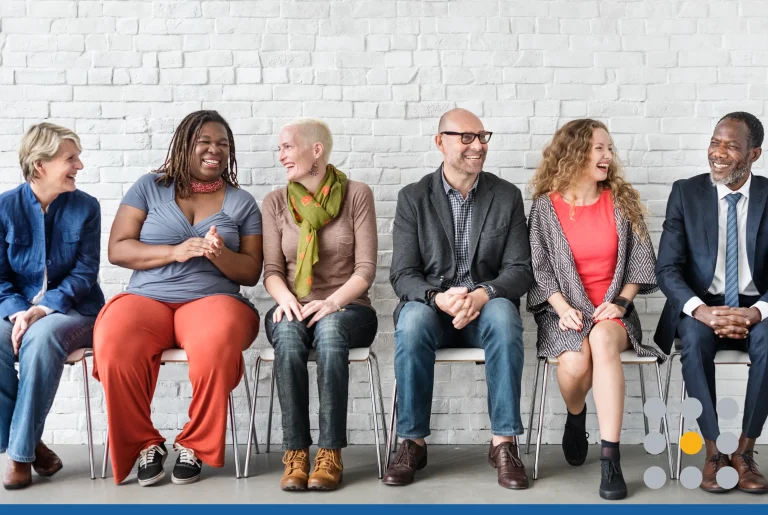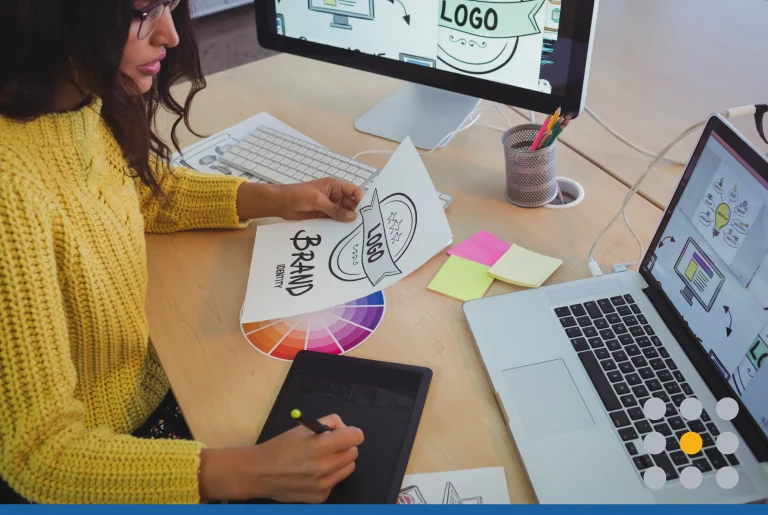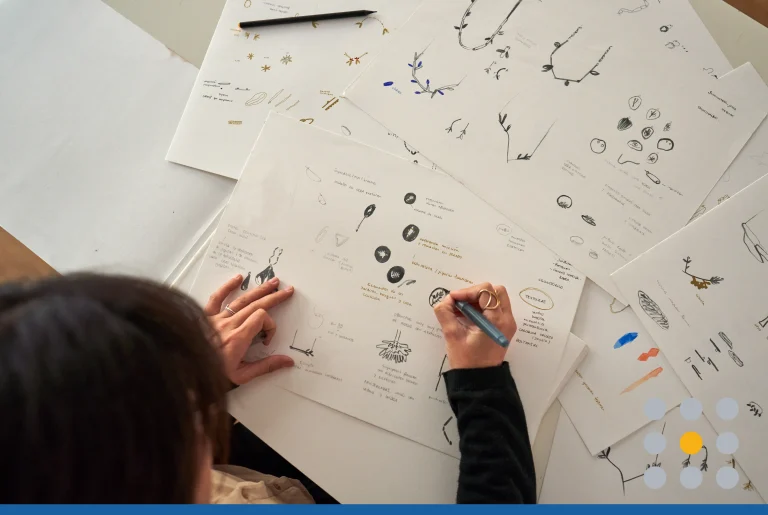Logo designers are professional graphic designers who create unique and custom brand imagery for the individual or company who hired them. Logo designers can either be freelancers, full-time employees at a design firm or advertising agency, or work under a temporary contract. Most professional designers have an undergraduate degree in graphic design and may also have experience in marketing and advertising.
What makes a good logo designer?
If you are looking to hire a logo designer, keep in mind that not all graphic designers are equipped with the same skills and capabilities of designing a great logo. You will find that some designers specialize in creating video content, while others prefer designing infographics, and some are more comfortable with making print advertisements more visually appealing. A good logo designer can’t just be proficient at creating a logo, they must also have a wide variety of other skills.
Skills every logo designer needs to have to be successful
- Excellent research capabilities.
Designers need to be able to immerse themselves in their client’s industry. This could mean conducting thorough research about a particular product or delving into the specifics of how the business provides its services. Research about the client’s current market and its competitors is essential to developing a logo that will make the business stand out against the rest.The best tool a professional logo designer can have at their disposal is a branding questionnaire or briefing meeting. A branding questionnaire is a series of in-depth questions that are given to the client in order to help the designer understand what type of logo design they are looking for. Questions can range anywhere from “Is there a unique story behind your business or business name?” to “What is your budget?”Briefings can also be helpful for designers who are in the research phase of a logo design project. Client briefings often give designers a more intimate look at how the business operates, what makes them unique, and what their goals are for their logo and brand message. The best logo designers will meet with their clients in person for an hour or more and will come away with notes to help them create the first design iteration.
- Ability to see the bigger picture.
Novice logo designers will often get swept up in the need to delve into the details of a business logo. The most skilled designers, however, will be able to think conceptually. With the branding questionnaire and creative briefing notes at the ready, a designer should organize and analyze all of the information given to them regarding color and font preferences, logo styles, and potential business names or slogans.The ability to see the bigger picture allows a designer to map out an initial sketch of the logo. To prepare for the first draft, the best designers will utilize color wheels, mood charts, and font libraries. No design concept should be left unexplored at this stage.Great logo designers need to be able to think conceptually if they are to plan ahead. Designers need to keep in mind that clients will be using their logo for all of their marketing initiatives. Logos must be able to adapt to social media accounts, print advertising, websites, and promotional products. Asking the client about how they plan on marketing their new logo will provide a better sense of how the finished logo design should look.
- Providing clear communication.
This is the skill that sets good logo designers apart from great logo designers. Without the ability to effectively communicate with the client regarding what their needs and desires are regarding their design, the whole project could end in disaster and a severed contract.Inexperienced logo designers often rely too heavily on the answers written in the branding questionnaire or their notes from the creative briefing. It’s important to be flexible and open-minded to last-minute changes and requests from the client. At the same time, great logo designers should also have the confidence to inform their clients about the nuances of the design world. They should not shy away from explaining why certain colors don’t mesh well together, or why the font size won’t be visible enough when the logo is placed on a promotional product.Logo designers who can properly explain the concept of design to a client, be able to accept constructive criticism of their work, offer clever solutions to a problem, and work towards compromises on the design are the ones who tend to be the most successful in the logo design industry.
How the logo design process works
Before you hire a designer, ask them first if they specialize in designing business logos. If they say yes, then the next step would be to request a portfolio of their past work. It’s crucial to determine if their logo design style is similar to how you envision what your finished logo will look like.
If you are looking to hire a logo designer to create your new business logo, then keep in mind that the design process will take longer than if you were to make a logo using an online logo maker. However, by opting for a professional designer, you can guarantee your logo will be unique to your business. Below is a quick rundown of what you can expect from the logo design process.
Step 1. Answer a branding questionnaire.
Your logo designer will most likely send you a branding questionnaire to fill out on your own time. It’s important to gather all individuals who will have a say in the branding initiatives (CEO, marketing team, investors, the board of directors, etc) to help contribute answers to this questionnaire. This will help avoid miscommunication later in the design process. If you don’t receive a branding questionnaire, then expect to set up a conference call with the designer and come prepared to answer questions about your business, your budget, and your design requirements.
Step 2. Industry and company research.
After your logo designer has gathered enough information about your business, they will take a day or two to conduct their own additional research about your industry or company. If you have news articles, press releases, or even a Wikipedia page about your business, chances are the designer will be reading these to get a better idea of how your business operates and what products or services you offer. The industry research phase may also consist of an in-depth competitor analysis. Real estate logos, for example, generally all have a certain style that is completely separate from that of the style of a restaurant logo. Designers want to make sure that your logo is acceptable and assimilates well into your particular industry.
Step 3. Provide initial sketches.
After compiling the information from the branding questionnaire and research, the designer will then send you a few initial drafts along with some commentary on their thought process regarding each design. For example, the designer may present a logo for a boutique clothing store. The logo may include the image of a clothing hanger and a whimsical, cursive font. Their thought process on this design choice might be that the client said they offer high-end feminine fashion. This is the time to again sit down with those involved in the rebranding process and discuss what aspects of the designs you like and which need to be scrapped or improved upon.
Step 4. Rework and revise.
Don’t feel bad about telling the designer exactly what you want; the more detailed feedback you give, the fewer revisions the designer will need to present to you because they will have a better understanding of what type of logo design you’re looking for. Keep in mind that your designer may have a limit on the number of revisions they will make on your logo, so it is especially important to give as much feedback in the beginning stages. Try to focus on color schemes, font types, the layout of the logo, and (if applicable) the wording of your business slogan. Dividing the aspects of your logo design into these different categories will also help the designer. This revision stage may take anywhere from a couple days to a week or more. If you’re pressed for time, it may be more beneficial to hire a logo designer that works at a design or marketing agency as they will be able to pull resources from within their company.
Step 5. Submit the final draft and provide image files.
After the rework and revise phase (which could end up occurring more than once), the logo designer will present to you the final logo design for your business. At this point, the designer will also present you with a variety of different image file types, including PNG, JPG, and a vector or EPS file. They will make sure to explain what image file type is best for what type of marketing initiative so that your branded logo looks professional and clean across all mediums. A good designer will also provide you with a variety of image sizes to use specifically for your online channels, such as your Facebook cover photo, Twitter photo, and website logo image.
Ready to work with a professional logo designer on your new business logo? Let’s get you in touch with one of our in-house designers!







